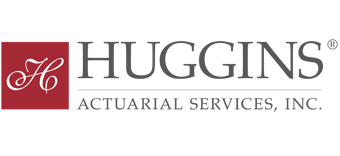The ultimate settlement and payment for some insurance claims may take a long time and be affected by many factors after occurrence. In the meantime, the insurer or other risk bearing entity must include on their financial statements a reasonable provision for the liability for incurred but unpaid claims cost. Accurately estimating the unpaid claim liability, also referred to as a “reserve,” is critical to any risk bearing entity’s solvency.
What is Loss Reserving?
An insurance contract is a promise to pay the policyholder, or an injured party on behalf of the policyholder, the cost of insured claims arising from the occurrence of a covered event. The true cost of claims may not be known for many years because uncertainty can surround the timing and amounts of claim payments. Nevertheless, the insurance entity must report its financial results on a regular basis. Loss reserving is the process of estimating an entity’s current liabilities for claims that occurred on or prior to a specific date, but that have not yet been paid.
Loss reserves, which in some parts of the world are also known as technical provisions, can be projected using a variety of techniques. Projecting loss reserves can yield a point estimate or a confidence interval that is a range of possible results. Traditional actuarial methods include Loss Development (aka Chain Ladder), Bornhuetter-Ferguson, Frequency/Severity, Backward Recursive, Berquist-Sherman, and Cape Cod. These methods can be used with paid and case incurred data, can be applied to loss and loss adjustment expenses separately or on a combined basis, and capture developments on known claims (case reserve development) as well as anticipated emergence of late reported claims (incurred but not reported, or IBNR).
What is the value of Loss Reserving?
Loss reserves often form the single largest liability on an insurance entity’s balance sheet. From management’s perspective, accuracy in the estimation of unpaid claims is essential for proper financial reporting, pricing, underwriting, strategic business planning, and financial decision-making. From an investor’s perspective, accurate reserves are essential for proper valuation of key financial metrics and to measure the company’s overall financial strength. For insurance regulators, who rely on financial statements to carry out their supervisory role, a material misstatement of loss reserves can result in a misstatement of a company’s true financial position and can delay necessary action to prevent a future insolvency.
How can Huggins help?
Huggins actuaries can quantify, evaluate, and monitor reserve estimates. Depending on the detail and availability of historical data, we can use a variety of actuarial methods to estimate ultimate loss and loss adjustment expenses and associated reserves on multiple bases including the following: by line of business, coverage, territory, or other segmentations; gross or net of reinsurance and salvage and subrogation; undiscounted or discounted for the time value of money. In every case, our work is guided by the Actuarial Standards of Practice and Code of Professional Conduct. We typically provide the following services individually or in combination:
Loss & LAE Reserve Analysis
We can provide a reserve estimate of your existing liability obligations as of a certain point in time, depending on your needs and the frequency of reviews. The reserve estimation can be performed on either a full basis, in which all assumptions and development patterns are reviewed, or on an abbreviated basis. For the latter, the analysis may be done on an interim basis, such as between two full analyses, or certain assumptions may not be updated but instead used as before or interpolated as appropriate.
We also perform an analysis of actual realized results versus the expected results, which provides insight on what items are under or overperforming expectations. This analysis may also be done on an interim basis, and compares expected loss development with actual development. Any favorable or adverse development can then be used to adjust the prior review’s ultimate loss estimates.
We can compute the necessary tax factors for Internal Revenue Service discounting.
Accrued Liability for Death, Disability, or Retirement (DDR) Claims Analysis
We can provide a reserve estimate of your existing DDR liability obligations as of a certain point in time, using your roster of health care providers.
Unearned Premium Reserve Analysis
An insurer may need to record, and an actuary may need to opine on, an unearned premium reserve for coverages such as (1) claims-made extended reporting coverage options related to death, disability and retirement (DDR reserve), (2) extended warranty insurance or (3) single or fixed premium policies with coverage periods in excess of thirteen months. Huggins’ actuaries can estimate and opine on these liabilities.
Estimate Confidence Interval (Range) for Loss & LAE Reserve
A confidence interval is a statistical concept expressing the degree of confidence that, for instance, the total loss reserves will be below a given amount in a specified period. The confidence level is interpreted as the long-run probability that the estimates will hold true over many simulated future periods. Huggins’ actuaries can estimate confidence levels, helping management to reflect their risk tolerance in the best estimate selections.
Loss Projections
We can estimate loss funding levels, or loss payments, for the coming year or over a multi-year horizon.
Estimate Retained Liability Under SOP 87-1 or FASB ASU 2010-24
The rules of audit accounting require healthcare institutions to carry a reserve for unreported claim liabilities (tail liabilities) for which they would be responsible in the absence of some form of insurance to cover these claims. In addition, the amendments to the Financial Accounting Standards Codification Subtopic 954-450 (Health Care Entities – Contingencies) requires healthcare entities to include in their financial statements an estimate of the gross liability for all claims which have occurred as of a given evaluation date. Healthcare entities are permitted to book a separate offsetting estimate of the portion of those claims covered by either commercial insurance or some form of self-insured funding. Huggins’ actuaries can estimate these liabilities.
Issue Second Opinion on Another Actuary’s Loss Reserve Opinion
Huggins’ actuaries can issue an independent (or second) opinion on the work of another actuary, either by performing our own analysis using the same data as the other actuary or by conducting a detailed review of the other actuary’s work product. A second opinion can be useful for the yearend Statement of Actuarial Opinion or for any other actuarial analysis.
Premium Deficiency Reserve Analysis
Under Generally Accepted Accounting Principles (GAAP), premium deficiency reserves (PDR) should be recognized if the sum of expected claim costs and claim adjustment expenses, expected dividends to policyholders, unamortized acquisition costs, and maintenance costs exceeds related unearned premiums. Under statutory accounting practices (SAP), the concept and recognition of premium deficiency reserves are similar, except for the exclusion of deferred acquisition costs, which are fully expensed under SAP. Huggins’ actuaries can evaluate whether a premium deficiency reserve is necessary or determine if your existing premium deficiency reserves are reasonable.
The Huggins Advantage
Our firm’s philosophy centers on our commitment to the highest level of quality service delivered by quality people. Our long tradition of providing responsive, technical excellence to our clients’ needs, through an integrated team approach, requires that we focus on quality in every aspect of every engagement.



